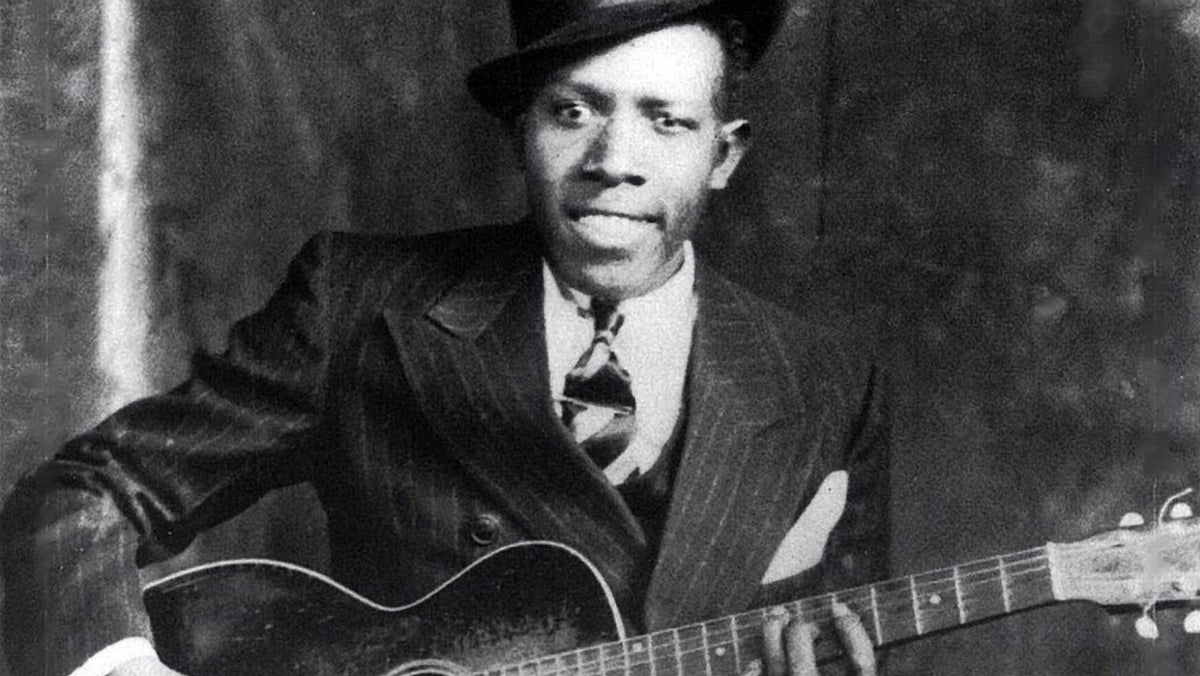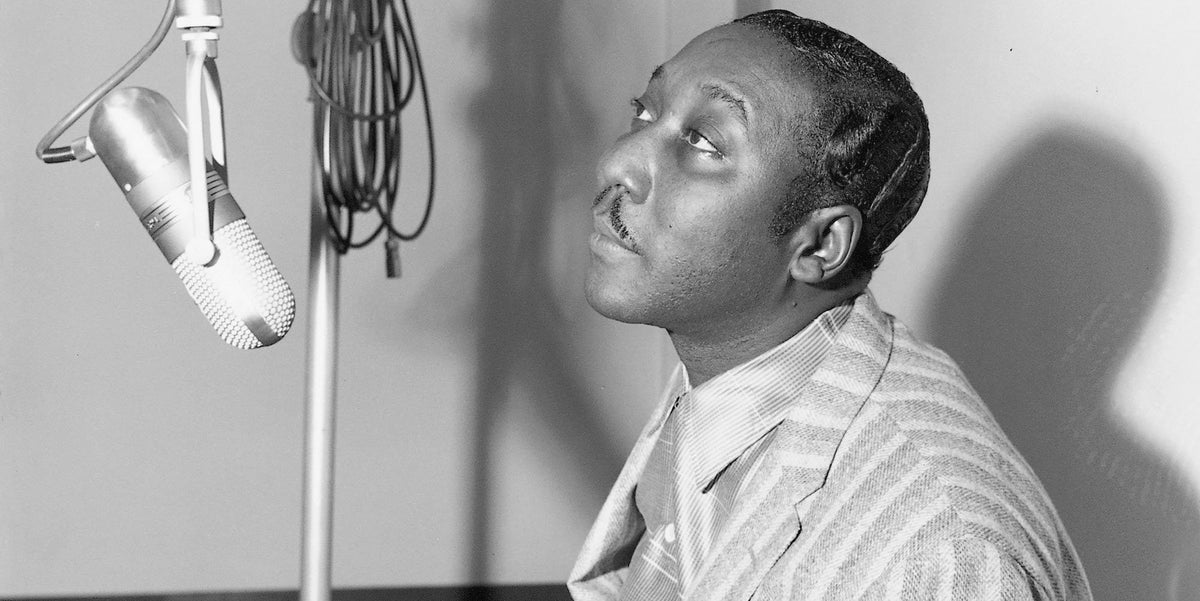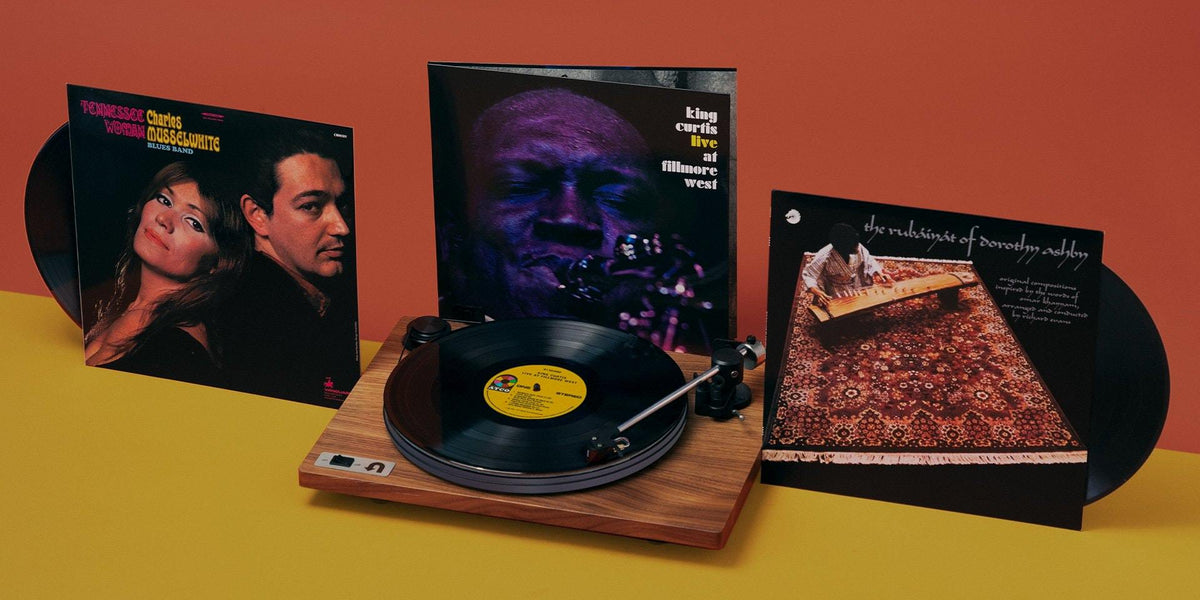Charlie Musselwhite’s Global Chicago Blues
Read The Liner Notes For This Month’s VMP Classics Release
In 1924, a 51-year-old civil engineer named Heitor da Silva Costa, after winning a contest held by the local Catholic church, traveled from his home in Rio de Janeiro to Europe, to meet with a Polish and French sculptor named Paul Landowski and a French civil engineer counterpart to talk something, well, monumental. Specifically, Christo Redentor, or Christ the Redeemer, a gigantic statue sculpted by Landowski and bankrolled by the Brazilian Catholic Church. After spending years in Europe conferring with experts, and purchasing many tons of concrete in Sweden, Silva Costa was able to return to Rio, where the statue was ultimately completed in 1931, after nine years of sculpting and construction. Christ the Redeemer is considered one of the new Seven Wonders of the World, which more or less means the thing is breathtaking, even in photos.
In 1961, a jazz pianist and composer named Duke Pearson (born one year after Christ the Redeemer was completed) was hired to accompany the famous singer Nancy Wilson on a worldwide tour. The tour took them to multiple continents, including South America, and the Brazilian metropolis Rio de Janeiro. Pearson was so taken aback by the Christ the Redeemer statue that the sense of wonder and awe never left him. Back in the states, he continued his work with Donald Byrd, who had had Pearson in his group with Pepper Adams before he was replaced by a young pianist named Herbie Hancock. Byrd was going into the studio to record for Blue Note when he asked Pearson to join up with him again, and to help arrange songs for what would be Byrd’s breakout record, and his first masterpiece, A New Perspective.
The centerpiece of that album, and crucially, its biggest hit, was “Cristo Redentor,” a sparse, nearly six-minute song built around a gospel choir’s ethereal hums and howls, a song that captures what it must have been like to step off a plane in 1961 and see a statue like that in a city you’d never been to. Around the song’s middle portion, the track opens up to be a showcase for Byrd’s trumpeting, plaintive, sad and soaring. It’s one of the best post-bop jazz tracks, a towering work of understated genius.
Four years after the release of A New Perspective, the song was also the centerpiece of Stand Back! the debut LP from Charlie Musselwhite’s South Side Band, a blues group led by a Mississippi-born, Memphis-reared harmonica player who studied at the feet of Little Walter, Howlin’ Wolf, and John Lee Hooker. Recasting Pearson’s awe-struck hymnal jazz for a bluesy organ waltz that allowed Musselwhite to flex his lips around his electric Chicago harmonica sound, the song became one of Musselwhite’s standards, a song that he still regularly plays, including when I caught him live in late 2017.
When Musselwhite and his band played “Christo Redemptor” — Charlie renamed it to get around pronouncing the Portuguese — live, it could stretch out into a never-ending vista, a place where the blues marched to points far out. So, in 1969, he re-recorded it in its live version glory, clocking in a new take at 11:45, nearly four times longer than his previous version, and more than double Pearson and Byrd’s take. That massive take is the centerpiece, and the first track on the second side of this, Tennessee Woman.
At this point, you’re wondering why we started in Brazil, just to get us to a 1969 album by a Chicago blues band, but therein lies the point: The best blues never just start with the performer and the song. They spiral out, through history, through moments, through feelings, to the point where they carry their backstories with them. No blues is an island, and you have no idea what small decisions, or small inspirations will lead to the performer, the song or the album you’re hearing.
Charlie Musselwhite’s story, in its broad facts, is similar to any number of bluesmen who started out in the South and made their way to Chicago in search of better opportunities, or at least better blues clubs. Born in tiny Kosciusko, Mississippi, in 1944 — 10 years before the city’s most famous ex-resident, Oprah Winfrey — Musselwhite moved with his family, like many in the rural areas of Mississippi, Arkansas and Tennessee, to Memphis when he was just three years old.
Musselwhite came of age in the golden age of Memphis music, when as a teenager, he could walk down Beale Street and hear anyone from Elvis Presley and Johnny Cash, to Furry Lewis and Gus Cannon. Howlin’ Wolf was a local radio DJ in those days, and the local high schools were pumping out musicians who’d form the backbone of jazz outfits, soul labels, and rock bands around town. Musselwhite was obsessed with the blues from a young age, teaching himself to play guitar and harmonica, but having no real aspirations for being a professional musician; he just liked to play along with the records he loved.
After his schooling via Memphis public schools reached its conclusion, Musselwhite struggled to make ends meet; he worked at various times digging ditches, in construction, and running moonshine. Like many people in that era, Musselwhite heard tales of the great union jobs available to workers in Chicago, jobs that had benefits, and wouldn’t be as backbreaking as digging ditches in the oppressive Memphis heat for $1 an hour. So, he took the highway out of Memphis to Chicago, arriving in town looking for work, nothing more.
According to an interview he did for the Logan Center Bluesfest in 2018, Musselwhite arrived in Chicago not knowing that the city even had a blues scene; he knew that VeeJay and Chess records were manufactured there, but it never occurred to him that the acts on those labels — his heroes growing up — were living there, too. He had started playing the blues harp and guitar because he figured that playing the blues must feel amazing since listening to it made him feel so good; then he realized that Chicago at the time was a city chock full of blues clubs. So while on runs driving an exterminator around town — his first job in the city — he’d remember where he saw marquees, and return there at night to see the city’s thriving blues scene up close.
Because white teenagers hanging around was a rarity in the blues clubs in those days, Musselwhite became known to pretty much everyone he worshipped. He’d hang out and request songs from Muddy Waters, Little Walter, Big Walter, and they in turn learned of “Memphis Charlie,” the Southern kid who knew all of their songs. Musselwhite, even then, didn’t mention to them that he was playing harmonica; he just relished being able to be in the same room as his heroes, listening to their blues up close, having a cold one after a hard day’s work.
One night, he’s sitting in a blues club, hanging with Muddy Waters and a waitress, when the waitress tells Muddy, “You ought to hear Charlie play harmonica.” And Muddy was surprised to learn the kid could play, and invited him to sit in during one of his marathon sessions at a club gig. At that point, Musselwhite’s life changed forever; a guy just making his way through life trying to find a union gig and hang out at blues clubs became one of the best blues harmonica players ever.
But, of course, it took a few years to get there. Musselwhite began gigging around Chicago, sitting in frequently with everyone from John Lee Hooker — who’d become his best friend — and Muddy to Wolf and Sonny Boy Williamson. Musselwhite underplays the momentous move from fan to musician, saying that “sitting in” didn’t mean much when these musicians had residencies and often had to play for more than 16 hours a week, and were often happy to take a break and give a new kid a shot. But he made the most of his sit-ins, getting a reputation as a guy who really knew the blues, and could really play.
It was around this time that Musselwhite entered the community of similarly aged white kids who were also chasing the blues around the South Side of Chicago, like Mike Bloomfield and Paul Butterfield. But where those guys — from the Chicago suburbs, from well-heeled families — were always aware of their outsider status, Musselwhite was immediately adopted by a series of surrogates in the blues community thanks to the similarity in his upbringing and his Southern roots, with folks like Big Walter, Hooker, Walter Horton and more taking him under their wings, and having him play on recording sessions, getting his name out to the variety of labels that were watching the Chicago blues scene like hawks. Being white definitely helped Musselwhite get his foot in the door at labels, but he was accepted in Chicago in a way that other white players couldn’t match.
Everything changed for Musselwhite, and for the Chicago blues kids, when Paul Butterfield’s band — featuring Bloomfield on guitar — got signed to Elektra Records and became stars of the Newport Folk Festival set, playing with Dylan and other luminaries of the rock scene writ large. It meant that A&Rs were looking for Chicago blues musicians in a gold rush, looking to sign the next breakout star from the scene, which meant new, non-Chess contracts for Buddy Guy, a solo deal for Bloomfield and Musselwhite opting to sign up with Vanguard, who put him in the studio with his South Side Band in 1967.
Butterfield had more or less introduced the Chicago electric blues harp style to the masses, taking an institution of Chicago blues and making it mainstream. But Charlie was able to bring that sound in all its complexity. Butterfield liked to rave-up, conjuring a galloping army in his wake. Musselwhite was more of a slow burn; “Christo Redemptor” became the centerpiece of his debut LP because it matched the simmering, slow crawl of the sticky Chicago heat — a song that simmered more than it boiled. It also helped that Musselwhite was blessed with a unique singing instrument, a voice that sounded like it came from someone who chewed rocks in molasses at every meal, and who had woken up on the wrong side of a 12-day hangover.
Stand Back! became a modest hit, at least one large enough to guarantee Musselwhite more cracks at making LPs. In the wake of the album’s success, Musselwhite was finally able to quit his various day jobs — which had grown to include record store clerk — and move to California, eventually convincing Hooker to do the same. He became the authentic blues harmonicist for the paisley rock ’n’ roll set, the guy who played the straight dope while the rest of the blues-based bands in San Francisco and L.A. were playing imitation, stepped-on blues.
Musselwhite’s second Vanguard LP, Stone Blues, was a step sideways, and his third LP, recorded after his third Vanguard LP, but released before on a different label, Louisiana Fog, tried to incorporate some psych rock elements into Musselwhite’s blues. Tennessee Woman, however, would end up an undervalued masterpiece, a flawlessly executed showcase for Musselwhite’s sound, an album that perfectly meshed the raucous sounds of Chicago electric blues and the down-home sound of Memphis blues. All of Charlie Musselwhite went into Tennessee Woman, and you can hear it from the first notes.
Tennessee Woman opens with the title track, a cover of Fenton Robinson’s jump-blues obscurity, a hit in the Chicago clubs and hardly anywhere else. Musselwhite’s croak and squall of a harmonica solo provide the song’s fireworks, but the real muscle is provided by a new addition to Musselwhite’s band, the jazz pianist Skip Rose. Rose could play bebop, but he was at his best powering the locomotive of the Charlie Musselwhite Blues Band, here sounding like the El pushing through a snowstorm in December. On the strolling, strutting “A Nice Day for Something,” a Rose original, Musselwhite cedes the spotlight to his pianist, whose confident leads give ample room for guitarist Tim Kaihatsu to deliver some noodling blues soloing. On a cover of Junior Wells’ “Little By Little,” Rose conjures a Western saloon, rattling off rolling piano figures in and out of the groove, and on “Blue Feeling Today” Rose is pounding out a sad counter melody that works alongside and against the torch song wails of Musselwhite’s voice and harp.
Rose is also front and center for Tennessee Woman’s climax, that aforementioned 11-minute-45-second take of “Christo Redemptor.” It’s as good a showcase for Musselwhite’s charms as maybe any 11 minutes of music is for any one musician’s. Each pass will hit you with new pieces of his performance to obsess over. Those long, 10-second wails of a single note he hits in the song’s processional. The way he uses the amp on his harmonica to bend space and time. The way that he drops into in the 7th minute to solo and freestyle a fugue state on a harmonica. The double-time jabs in the 8th and 9th minutes. It’s virtuosic in form, execution, and if it doesn’t sell you on the harmonica being an incredibly affecting instrument, turn back now.
Tennessee Woman ends with one of two Musselwhite originals, “I’m A Stranger,” a crawling, in-the-gutter blues that has Musselwhite groaning his vocals and howling on his harmonica. It’s a song that synthesizes all of his influences into something that is his own; a mix between Memphis and Chicago, Muddy and Furry, down home and refined.
Tennessee Woman was the last album Musselwhite released on Vanguard, which let him walk to a different label even before they put it out. The blues was fading in popularity, and like his heroes, Musselwhite bounced around to a variety of labels who were still behind the blues as disco, punk and New Wave came and went, including multiple albums on Chicago’s Alligator Records. He’d tour with John Lee Hooker and, eventually, become the go-to harmonica player for anyone looking for a little bit of that Chicago blues pixie dust, playing with everyone from Cyndi Lauper to Tom Waits. He finally got Grammy recognition when his 2013 album with Ben Harper, Get Up!, won the Grammy for Best Blues Album. Ultimately, that legacy might pale in comparison to the rumor that he inspired Elwood Blues, Dan Aykroyd’s character in Blues Brothers, a point driven home when Musselwhite appeared in the film’s 1998 sequel.
It’s an unlikely life for a guy who set out to just make enough money to see the blues live regularly: Fifty-plus years out on the road, playing his favorite music around the world. As unlikely as a pile of rock in Sweden making its way to a mountain halfway around the world.
Andrew Winistorfer is Senior Director of Music and Editorial at Vinyl Me, Please, and a writer and editor of their books, 100 Albums You Need in Your Collection and The Best Record Stores in the United States. He’s written Listening Notes for more than 30 VMP releases, co-produced multiple VMP Anthologies, and executive produced the VMP Anthologies The Story of Vanguard, The Story of Willie Nelson, Miles Davis: The Electric Years and The Story of Waylon Jennings. He lives in Saint Paul, Minnesota.
Related Articles
Join the Club!
Join Now, Starting at $36Pages







